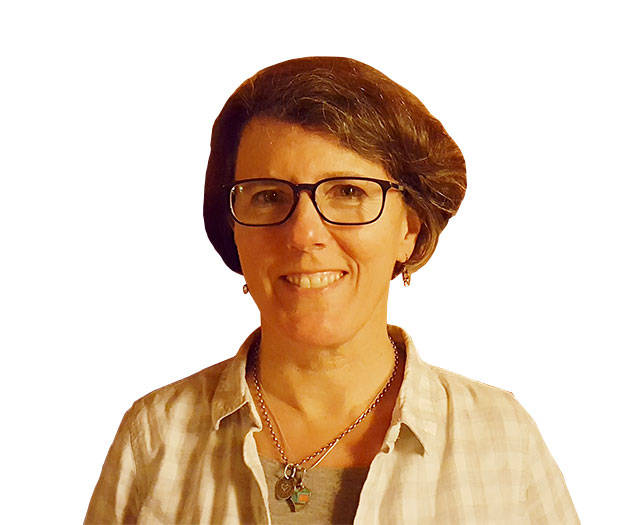Did Mother Earth gift you crab to crack or oysters to shuck this season?
Fresh delicacies from the cold waters of the Strait are a wonderful tradition for brightening up the long evenings this time of year. Yet another way to celebrate our good fortune in living here.
Perspective
If you had oysters it’s likely they were the “Pacific” variety, native to Japan. The only native species between Alaska and Baja California is the Olympia oyster, but its habitat has been decimated partly because of the popularity of cultivating and selling the larger and preferred Pacific variety.
The Olympia is much smaller but packs impressive power to filter and clean the water in which it resides. Now, millions of Olympia oyster seed are placed every year up and down the west coast and the species is making a comeback – helping restore water quality in Sequim Bay, Dungeness Bay, and Saanich Inlet in Victoria Harbor across the Strait.
Maybe you had world-famous Dungeness crab, a namesake of our home watershed and so tasty that recreational crabbing has exploded – along with the number of lost crab pots. Thousands are lost every year in Puget Sound, killing hundreds of thousands of crab over time since they keep on “catching” unless they’re equipped with biodegradable hinges. This past summer, 149 such “derelict” crab pots were hauled out of Dungeness Bay in a few days during a targeted clean-up effort, saving hundreds of crab lives.
Speaking of crab, the recent “Three Crabs” estuary restoration opened up dozens of acres of coastal wetlands and restored a half mile of Meadowbrook Creek to benefit fish and shellfish. The site of the little restaurant famous for crab since 1958 now hosts tidal inlets and other excellent habitat for descendants of those meals.
While 3 Crabs was a much-beloved place to eat, tourists and most locals wouldn’t have realized the restaurant’s expensive septic system was vulnerable to high tides and the overflowing creek. It’s a case study of how removal or repair of problematic septic systems – and better maintenance of the rest – has helped clean up water quality to the point that nearly 1,500 acres of previously closed shellfish beds have been re-opened in Dungeness Bay in the past decade.
Speaking of cleaning up, marine debris (mostly plastic) is counted as it’s picked off beaches by local school kids and others as part of an international research project. In addition, the annual Coast Cleanup generates about a ton of plastic debris collected by hundreds of volunteers crawling over driftwood, one piece at a time.
Thank you gifts
The success stories mentioned above wouldn’t be possible without regular folks volunteering to commit their personal time to restoring our damaged natural environment. Volunteers are outside giving back every day by planting trees and oyster seed, pulling weeds and crab pots, counting bacteria and baby salmon, and much more.
In getting their hands dirty and their feet wet volunteers reciprocate Mother Earth’s priceless gifts and restore something deep inside themselves as well.
Geek moment
Consider volunteering in 2020 for any of the dozens of organizations offering opportunities for hands-on environmental restoration and monitoring in this area. As a member of the Clallam Marine Resources Committee I am familiar with several of the volunteer-intensive projects mentioned above; feel free to contact me for more information at asoule@sequimwa.gov.
A few others working in the Dungeness watershed include Streamkeepers of Clallam County, North Olympic Salmon Coalition, North Olympic Land Trust, Clallam Conservation District, Dungeness National Wildlife Refuge, and the Jamestown S’Klallam Tribe and Dungeness River Audubon Center.
A thorough list may be found on the Jefferson County WSU Extension webpage at extension.wsu.edu/jefferson/environmental-volunteer-opportunities.
For classes on DIY septic system inspection contact Clallam County Environmental Health. Self-inspection has made a big difference in compliance with septic system maintenance requirements; enforcement over failing systems has also improved in recent years.
For the 2020 Water Year (started Oct. 1):
• Snow depth at the Dungeness SNOTEL station, elev. 4,010 feet: 5 inches (76 percent of normal; overall precipitation is at 45 percent); Number of days below freezing = 4.
• At the Sequim 2E weather station (sea level): Total rainfall = est. 5.8 inches; High temp. = 63 degrees F on Oct. 16; Low temp. = 3 degrees F on Nov. 25 (tentative).
• River flow at the USGS gage on the Dungeness (Mile 11.2): High (same) = 873 cubic feet per second (cfs) on Oct. 22; Low = 102 cfs on Nov. 30. Range for the past month: about 100-700 cfs.
• Flow at Bell Creek entering Carrie Blake Park: about 5 cfs; Bell Creek near the mouth, at Washington Harbor: storm flow generally 5-10 cfs.
Ann Soule is a hydrogeologist immersed in the Dungeness watershed since 1990, now Resource Manager for City of Sequim. The opinions expressed are those of the author and do not necessarily represent policies of her employer. Reach Ann at columnists@sequimgazette.com or via her blog at watercolumnsite.wordpress.com.


